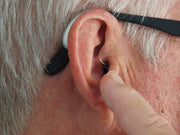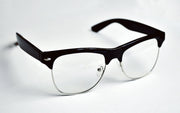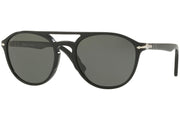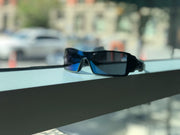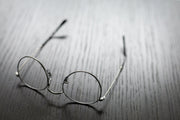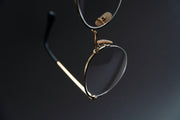The anti-reflection (AR) coating applied to the lenses is a metal oxide layer that improves vision, especially in snow or bright sunlight. Sad to say, scratches can take away this beneficial effect and cause some inconvenience to the user.
Manufacturers often claim that you cannot remove this coating. The truth is, some basic tools can help you with this problem. However, it is important to determine whether the materials are glass or plastic before further steps.
Let our article show you how to remove anti-reflective coating from glasses. Dive in right now!

How To Remove An Anti-Reflective Coating From Plastic Lenses
Scratches or smudges on your eyewear indicate damage to its AR coating. It is necessary to remove this layer as soon as possible to avoid disturbances in your vision. This action saves you a good amount of money instead of replacing a new lens.
On the downside, it sounds risky and challenging. You must follow strict guidelines to ensure the safety of your belongings.
That's why we are here with detailed advice. First, let's start with an easier option: a plastic one.
Step 1: Put On Protective Gear
Any work with acidic solutions requires protection for body parts in direct contact. Never forget your rubber gloves and safety goggles before taking the next step.
Step 2: Remove Plastic Lenses
Now, carefully separate the damaged lenses from the frame. The manufacturer's instructions may come in handy during this process. It would help if you referred to it explicitly, as some may have sturdy construction.
Once done, put them in a safe location and move on to the anti-reflective striping solutions.
Step 3: Prepare The Solution
Prepare a bowl or tray for the anti-reflective solution. Pour in just enough water to completely cover the lenses. It is best to use the solution at room temperature.
Step 4: Dip The Lense Into The Solution
Though putting on protective gloves, it is highly recommended to utilize a wooden tool instead of your hands at this stage. It would help if you used a clip to insert the lenses into the previously prepared solution bowl. Place the convex side face down for first contact.
Because of the acidity of the solution, timing is important. You must do this step with each lens in turn for exactly 15 seconds. Remove it from the solution immediately after the timer expires. Long-term exposure may cause some damage to your item.
Remember to cover the bowl tightly to prevent evaporation. Additionally, you may sometimes go back to this section again if the results are not as desired.
Step 5: Rinse With Water
Place the lenses under running water to wash away the anti-reflective solution. Use a cotton cloth to dry them gently. Then it is imperative to double-check the quality after these efforts.
In fact, some results occasionally let you down. All your works so far have not removed the AR layer. But don't panic!
Repeat step 4 for 5 seconds intervals. Rinse with water and dry again. Now, we believe you have got what you want!
Step 6: Reinsert The Lens
You need to put the lens back into its frame. The user manual may be helpful once again.
How To Remove An Anti-Reflective Coating From Glass Lenses
The glass variants have become rare these days as plastic ones have invaded modern consumer habits. However, follow our remedy below if you already own one and experience inconvenience due to AR coating scratches.
Step 1: Prepare The Necessary Tools
These glass lenses are sensitive to chemical solutions. They cannot give the magical effect as with the plastic ones. In other words, your options for removing the AR layer are reduced to just one way: mechanical abrasion.
You must perform manual scraping with plastic tools only. The sharpness of the metal can lead to more severe scratches. In this case, a plastic kitchen scraper seems to be the most suitable choice.
Step 2: Make The Solution
We recommend that you should not start shaving immediately. Softening AR overlay makes your future work easier and more efficient. Prepare a tray and fill it with some isopropyl alcohol. Besides, some tests have shown that a little salt produces better results.
Sodium chloride ions interfere with the electrostatic attraction that is produced by the coating. As a result, your process takes place more rapidly. If you plan to try this solution recipe, a suitable ratio is 5 isopropyl alcohol: 1 salt.
Warning: Say NO to etching creams as they destroy your eyewear with glass material.
Step 3: Soak The Glasses
Leave your lenses in contact with the solution for a minimum of 10 minutes. The softening over a longer period results in easier scraping. Still, it is best to increase the soaking time to 30-60 minutes.
Step 4: Scrape The AR Coating
After the softening has achieved the desired effect, start scraping with the plastic tool within 10 minutes for the best results. Pay attention to your hand strength to minimize damage, and be as gentle as possible!
Step 5: Clean The Lens
Rinse it with a cleaning mixture (including dish soap and glass cleaner). If you notice a few scratches, apply some toothpaste (which does not contain whitening gel). Then, use a soft cloth to massage for 10-15 seconds gently. Finally, wash off the substance with clean water and pat it dry with a microfiber cloth.
You have now completed all necessary steps for AR coating removal. It may take more effort with glass ones, but the results are sure to excite you.
Conclusion
This article has just shown you how to remove anti-reflective coating from glasses. The most important rule is to proceed as gently as possible.
Honestly, you cannot go through much trouble if you follow our guidelines carefully. We hope that our information will help you fix your lenses at home and save a little money on other personal problems.









